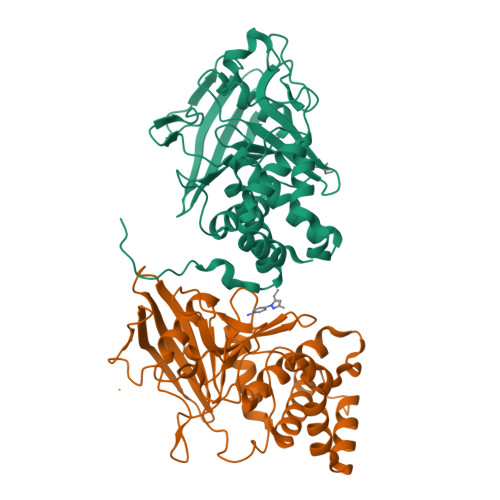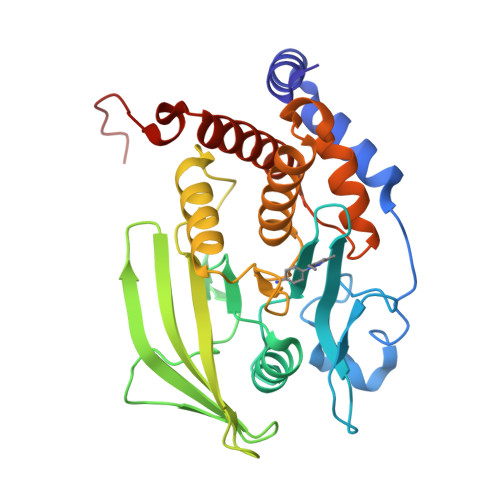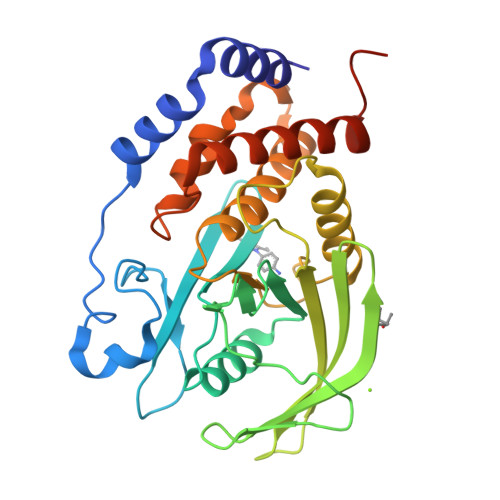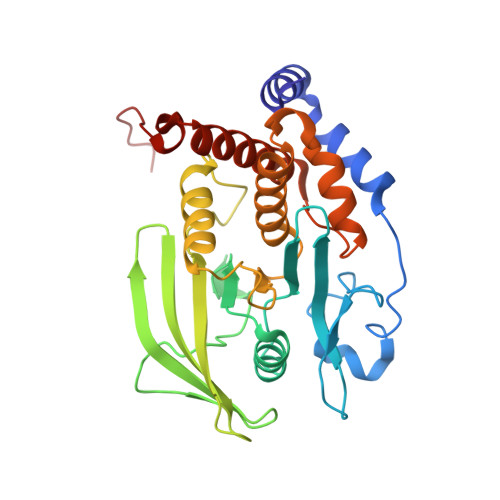Discovery and Validation of the Binding Poses of Allosteric Fragment Hits to Protein Tyrosine Phosphatase 1b: From Molecular Dynamics Simulations to X-ray Crystallography.
Greisman, J.B., Willmore, L., Yeh, C.Y., Giordanetto, F., Shahamadtar, S., Nisonoff, H., Maragakis, P., Shaw, D.E.(2023) J Chem Inf Model 63: 2644-2650
- PubMed: 37086179
- DOI: https://doi.org/10.1021/acs.jcim.3c00236
- Primary Citation of Related Structures:
8G65, 8G67, 8G68, 8G69, 8G6A - PubMed Abstract:
Fragment-based drug discovery has led to six approved drugs, but the small sizes of the chemical fragments used in such methods typically result in only weak interactions between the fragment and its target molecule, which makes it challenging to experimentally determine the three-dimensional poses fragments assume in the bound state. One computational approach that could help address this difficulty is long-timescale molecular dynamics (MD) simulations, which have been used in retrospective studies to recover experimentally known binding poses of fragments. Here, we present the results of long-timescale MD simulations that we used to prospectively discover binding poses for two series of fragments in allosteric pockets on a difficult and important pharmaceutical target, protein tyrosine phosphatase 1b (PTP1b). Our simulations reversibly sampled the fragment association and dissociation process. One of the binding pockets found in the simulations has not to our knowledge been previously observed with a bound fragment, and the other pocket adopted a very rare conformation. We subsequently obtained high-resolution crystal structures of members of each fragment series bound to PTP1b, and the experimentally observed poses confirmed the simulation results. To the best of our knowledge, our findings provide the first demonstration that MD simulations can be used prospectively to determine fragment binding poses to previously unidentified pockets.
Organizational Affiliation:
D. E. Shaw Research, New York, New York 10036, United States.






















